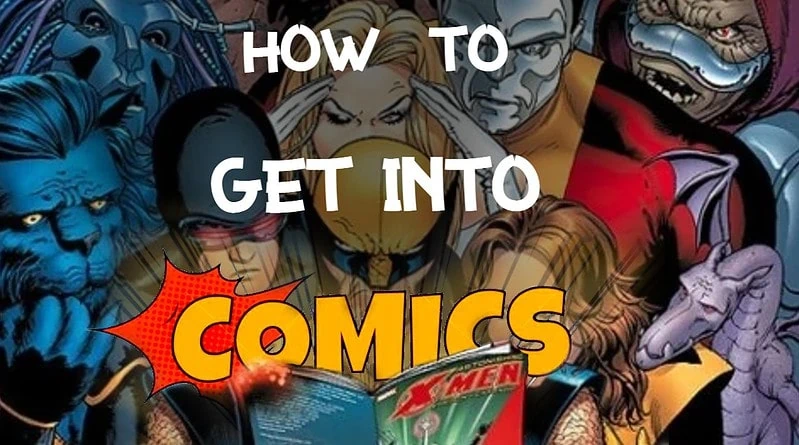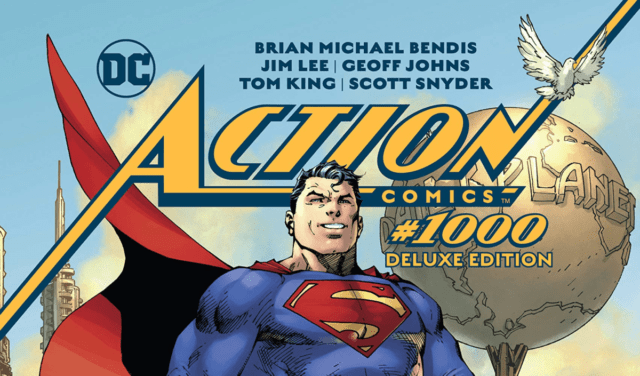As we go to our Local Comic Shops for our yearly dose of free stories for Free Comic Book Day, here is a handy guide to help you get acquainted with the world of comics and a guide for how to start reading comics.
A little background on comic books and numbering…
A comic is a story told through static pictures with text, usually in series with other comic issues. Monthly comics are like a TV show, where one episode is published every month until it eventually ends. Some series can last 3 issues, and some have lasted for over 1000!
To handle the big numbers, companies like to occasionally “reset” to #1. This is similar to revival shows on TV. Usually, the story continues, but in a way that new readers can comfortably join as well. When this happens, the different series are referred to by year and number. So Batman (1940) #12 refers to the 12th issue of Batman from the series that started in 1940. Meanwhile, Batman (2011) #12 refers to the 12th issue of Batman from the 2011 series.
Renumbering to #1 is the easiest way for new readers to find easy starting points, so be on the lookout for those #1s! Don’t be confused by them – remember that these are like different series of an ongoing TV show, and all series start with an episode 1.
To reach the big numbers, Marvel and DC add up all the series with the same name. This is when you have “legacy” numbering. For example, after Action Comics (1938) #1-904, the series reset to Action Comics (2011) #1-52. Then DC added these together (904+52) and continued the legacy numbering with Action Comics #957-1000.
On reading monthly vs waiting for a comics collection
You can read ongoing comics issues monthly as they come out, or wait for a collected set once the story is done (like waiting for TV episodes to be collected on Blu-ray). The collections are called a “trade paperback,” “trade” or “TPB” for short.
Usually, a simple trade would be titled something like Batman: The Court of Owls, and the back cover will say “Collecting Batman (2011) #1-6.” This tells you it has issues 1-6 of the series that started in 2011, and the title “Court of Owls” tells you the name given to the collected storyline. But like Blu-rays of a TV show, the comic still continues after this! So after reading this collection, you should look for a trade that has issue #7 and continue the story from there.
Oftentimes, you’ll find the same issues collected in different ways. For example, the “Batman by Scott Snyder & Greg Capullo Omnibus Vol 1″ collects Batman (2011) #1-33. That includes the same #1-6 we talked about before, and the 27 issues after it! This is like a giant Blu-ray boxset, sold all in one convenient set. It’s the same comics, just in a new package.
Sometimes publishers, like DC Comics or Marvel Comics, even make “compilation” collections. This is like if The Flash TV show released a Blu-ray set called “Flash: The Captain Cold Collection” with all their favorite Captain Cold episodes. In these kinds of sets, you can find issues from history that are all related to a single topic, but aren’t necessarily from the same storyline or author. Think of them like a “Greatest Hits” playlist, or a short story collection.
But what about those crazy comics crossovers and tie-ins?
Of course, comics have crossovers. To follow these, you could find the trade for each comic that ties into the event you’re interested in, or you could simply look for a special crossover collection that collects all the tie-ins for you. For example, there could be a Court of Owls Omnibus that would collect not just Batman’s “Court of Owls” chapters from above, but also the Batgirl, Nightwing, and Red Hood chapters that tie into the Court of Owls storyline too. Even though the main Batman series is enough for the basic story, this kind of collection is the ultimate way to follow the whole saga along with all the side characters. This is just another way the same comics can be collected and repackaged.
Tie-in events can also be difficult if you don’t care about them. Sometimes you might be reading Batman and suddenly, one of the Robins is dead again! It can be confusing, but a good comic writer should explain the relevant things happening outside of their book that tie into it. To be careful, it’s a good idea to consult a comics guide before starting a long series.
For example, this is the reading order for Marvel’s Rise of the Midnight Sons crossover in the 1990s. It’s messy, but the guides are here to help!
Getting into comics doesn’t have to be intimidating
The main message is that comics are a series of never-ending stories set in a shared universe. That can be intimidating because there’s so much content, but if you use a guide to jump in at the right moment and take it one story at a time, then it’s as simple as watching a TV show one episode at a time. You don’t need to look for the beginning – just start somewhere and learn the characters as you keep watching. Then you can go back to the earlier stuff anytime you want to catch up.
Finding your favorite comic series can be as much fun as finding your favorite TV show. It’s almost the same as jumping into the MCU as a brand-new fan, and just as much fun! You can search for stores participating in Free Comic Book Day here, or use websites FindAComicShop.com or ComicShopLocator.com to find stores near you and start reading comics while supporting your local businesses!
I hope this comics guide helps you understand how to follow your favorite titles. Please find me on Twitter (@vinwriteswords) if you have questions, and check back in to The Cosmic Circus (@mycosmiccircus) for more comics guides and reviews coming soon!





